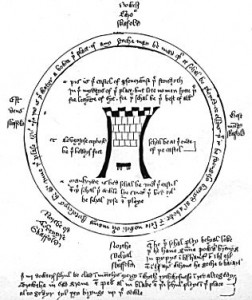What is the difference between a property master and a properties director? There is some contention in the props world and theatre world at large as to the correct name to call the head of props. Some feel “props master” is a traditional term that will soon be phased out. I posit that the two terms are actually distinct and can be used to more accurately describe the different roles and jobs available in the props world.
A properties director is in charge of a props shop and oversees the artisans, shoppers, and other employees. A prop master is in charge of providing props for a show.
I’ve written before about my theory as to why we use the term “prop master”. The term prop master seems to have gradually replaced the more-dated term “property man“. The earliest known occurrence of the term “property man” was in 1749, while the term “property master” was seen as early as 1831. Interestingly though, the term “property man” has persisted all the way through the 1970s (and beyond), though in later years it was used more to describe one who worked in the props department, rather than as the head of one.
The default name for the head of props is “prop master”. “Properties Director” is a much newer term, designed to describe the head of a discrete department on par with electrics, sound, or scenery. While the momentum of tradition still causes some properties directors to be referred to as prop masters, a prop master is not necessarily a properties director. A properties director may be the props master for all the shows in a season. But in a company that does a multitude of work in a number of spaces, the properties director may hire additional props masters for some of the shows.
As an example, here at the Public Theater, Jay Duckworth is the head of the properties department. He is what some would consider the “properties director” (though due to tradition, his official job title remains “property master”). As part of his job, he is the prop master on the mainstage shows. We have a series of productions called the PublicLAB, which are smaller-budgeted, but still fully-produced, new plays that are not part of the mainstage season. We hire an additional person for each of these shows to be the prop master. This person does not become head of the department, nor does Jay cease to be in charge. Thus you can see why the distinction is important; in the Public Theatre prop department, Jay is the properties director even when he is not the prop master on the current show, and additional prop masters can be hired without altering the hierarchy of the department.
The duties of a props director are best described in “The Properties Directors Handbook” by Sandra Strawn, which I’ve linked to on the side of this website since the beginning. One of the better guides to being a prop master can be found in The Prop Master: A Guidebook for Successful Theatrical Prop Management by Amy Mussman. You will notice that there is a large amount of overlap in these two guides. Indeed, the prop master for a large Broadway show will have more employees and managerial duties than the properties director at a small regional theatre. The distinction is not meant to be a hierarchical one (ie, to imply that being a properties director is a step up in the career ladder). Rather, the distinction is neccesary to clarify the job duties of whomever is hired.
It’s like the difference between a claw hammer and a ball peen hammer. Neither is better than the other, and in most cases they can accomplish the same task. However, for the tasks which each was specifically designed, you will find subtle differences that make them perform better than the other.
As a final note, I don’t really care for the term “properties manager”. In some cases, especially academia, giving someone the title of “director” automatically places them in a different salary range. It’s a totally arbitrary bureaucratic reason. Regardless, the term “property manager” is more commonly used in real estate, and so it is confusing to use a similar term, especially when a more distinct one already exists. Second, when an organization lists a job posting for a “property manager”, you have no idea what the position actually is. Usually, the job they are describing is more akin to a props run crew supervisor (a distinct job in its own right) rather than a prop master or properties director.
It is vital that the correct job titles be more consistently used in order for people with the correct skills and career goals to find these jobs (and vice versa).

